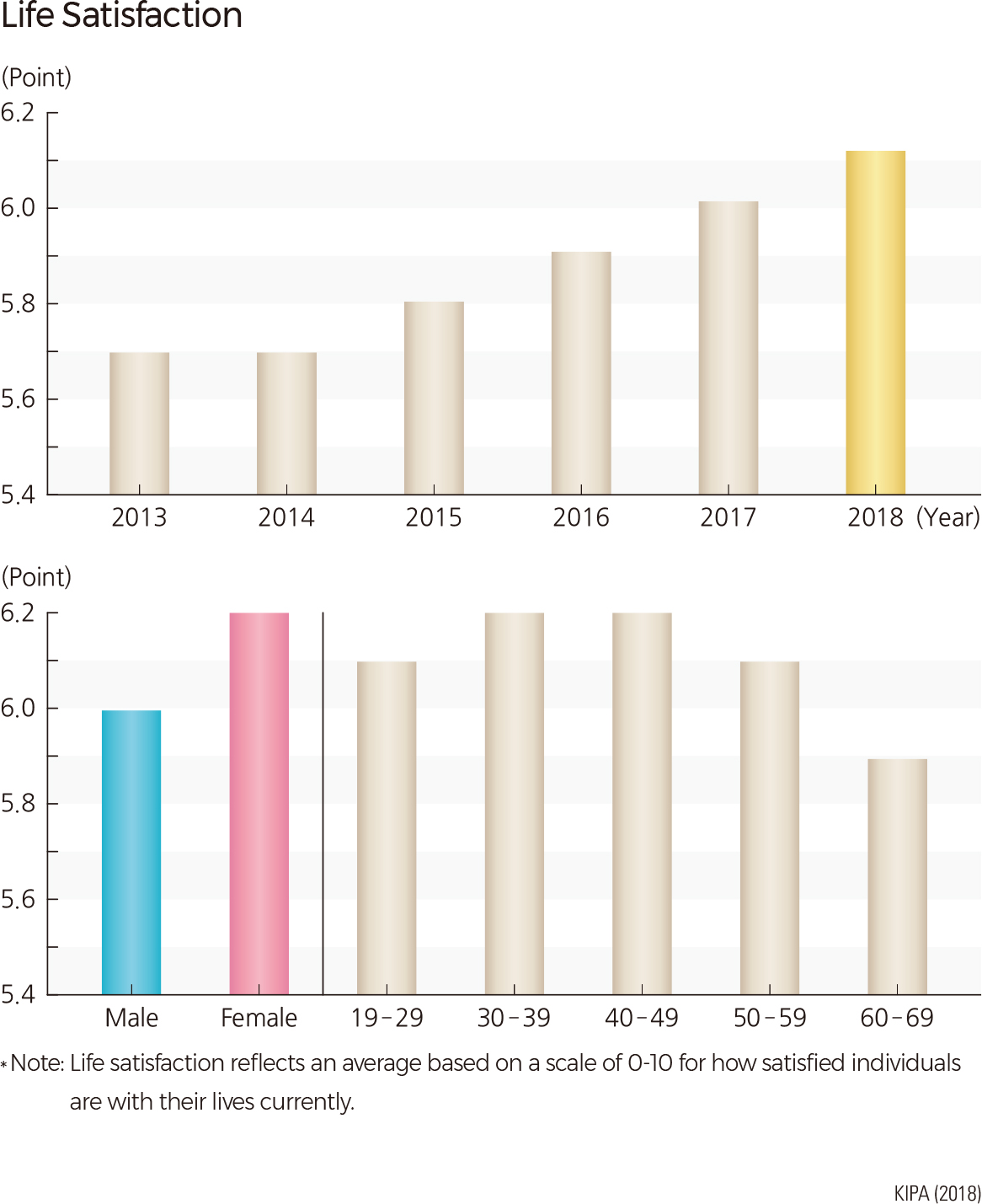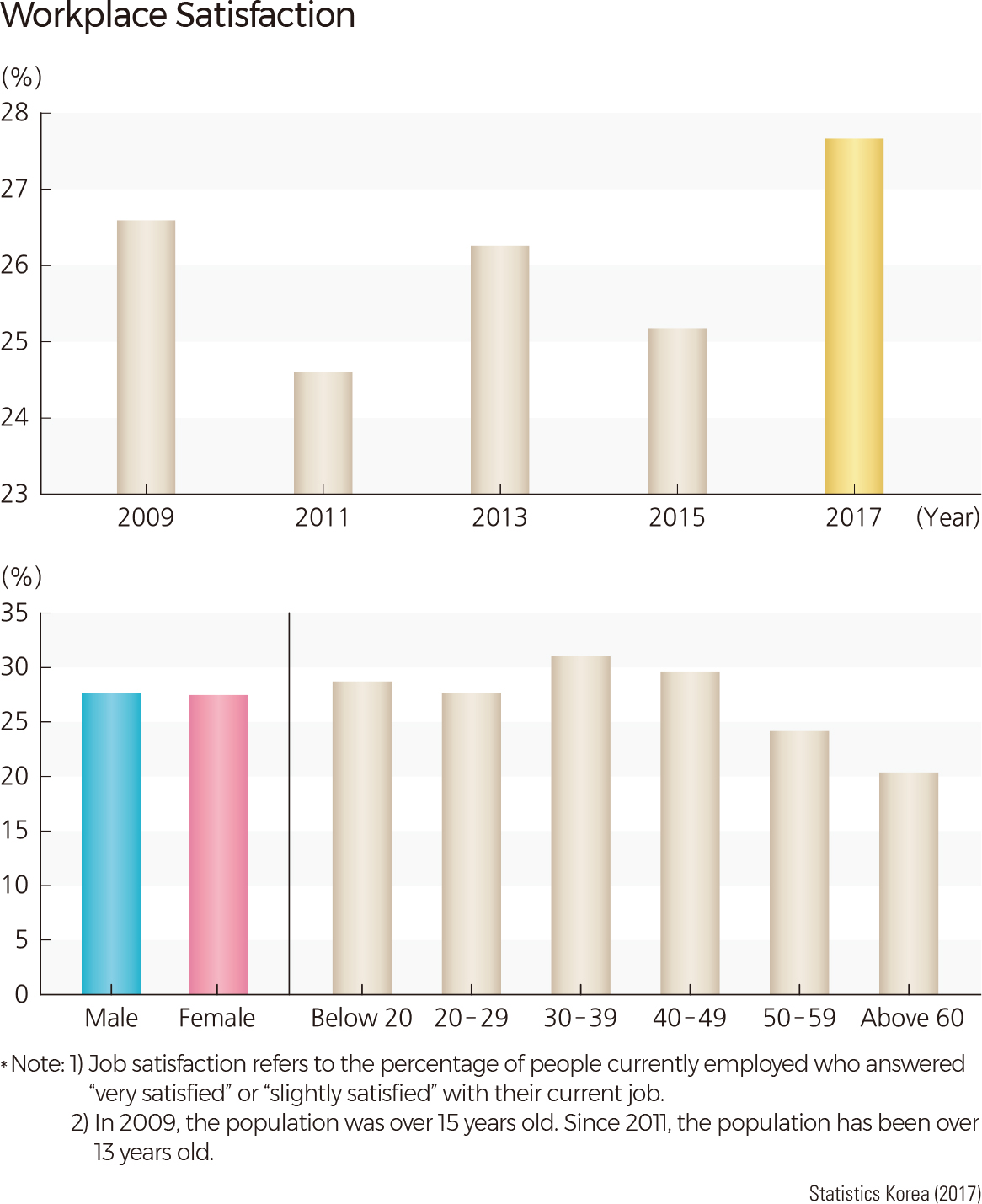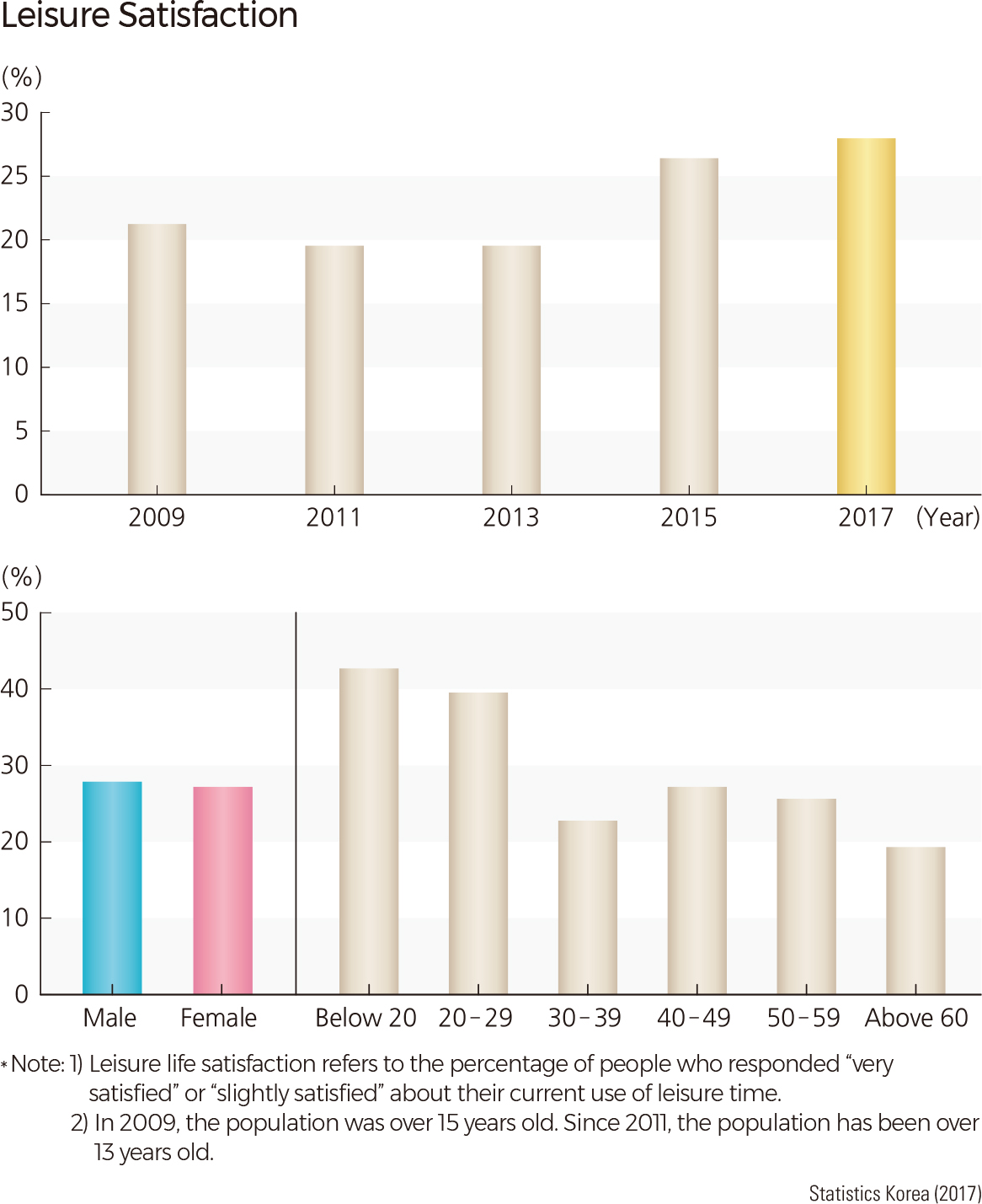English I 2019
While happiness is a common value, the forms it may take in individual lives vary widely, and this understanding presents challenges to those charged with measuring the quality of life. The economic-based objective, index-oriented evaluation of happiness has been replaced by an evaluation that includes social and subjective indices as well. Among policymakers, achieving majority consensus on defining this index has been difficult. At present, a variety of research results on measuring happiness are reported by central and local governments, the academic community, and the business community. When compared with social, subjective indices, economic and objective indices reveal major differences in that the latter uses one single measurement (monetary value) and its utility is limited when evaluating an individual's happiness. The former, on the other hand, uses a flexible variety of measurements that can be interpreted differently according to diverse contexts. This difference does not simply mean that the criterion for the evaluation of happiness should be one single measurement or a mixture of multiple measurements, but rather it means that the interpretation of the level of happiness within a society should require multiple conceptual approaches that allow for philosophical and ideological differences.
The concept Quality of Life (QoL) itself is under active scrutiny so that happiness levels are no longer defined solely through monetary indices but through ever-broadening perspectives on just what happiness means, thereby facilitating more precise measurements of the welfare of both individuals and the society at large. Korea has achieved remarkable socio-economic development through industrialization and democratization but has faced new social problems such as decreased life satisfaction of individual citizens, and weakening social vitality and social integration. Policy efforts to solve this problem have been carried out in recent years. Since 2011, the government has used quality of life indicators to objectively measure the people’s “quality of life” and to use it as a basis for establishing and implementing relevant policies. As of 2019, the quality of life measures included 71 indicators in 11 sectors. The results showed that 16 indicators, such as employment rate, unemployment rate, and air quality satisfaction, had worsened over the previous year. One indicator, percentage of households living in their own homes, remained the same. All 54 remaining indicators measured improvement.
|


